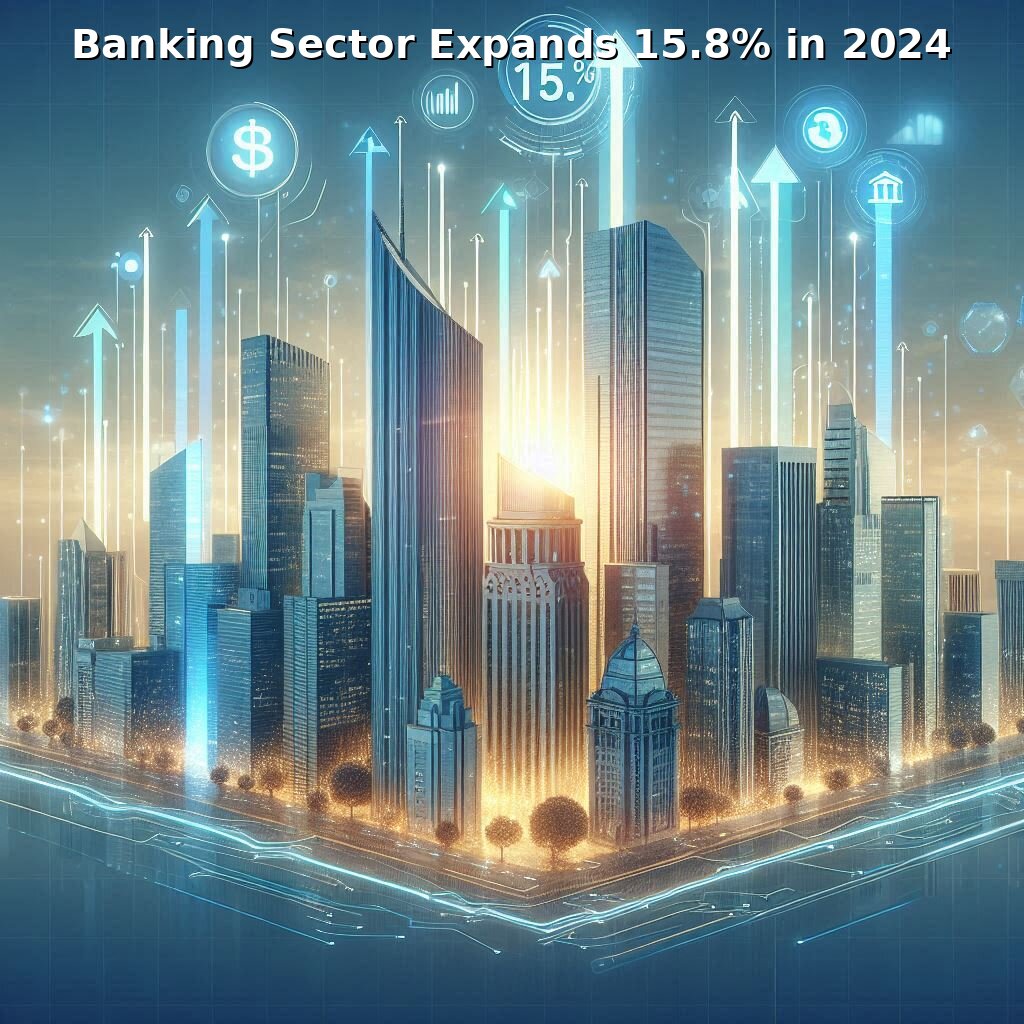
In 2024, Pakistan’s banking sector demonstrated remarkable resilience and growth, expanding by 15.8% in assets—a testament to improving macroeconomic stability and strategic policy interventions. According to the State Bank of Pakistan’s (SBP) Financial Stability Review, this surge reflects a broader economic recovery marked by easing inflation, a stable exchange rate, and renewed confidence in financial markets. The sector’s robust performance, driven by investments and private-sector credit, underscores its pivotal role in supporting economic revival while navigating domestic and global headwinds.
A combination of monetary easing, fiscal consolidation, and targeted reforms fueled this expansion. As inflationary pressures receded, the SBP’s accommodative monetary policy spurred borrowing, particularly in the private sector, which saw a strong rebound in credit uptake. Businesses and consumers, buoyed by lower borrowing costs and revived economic activity, increasingly turned to banks for financing. A critical catalyst was the SBP’s tax policy linking income from government securities to advances-to-deposit ratios (ADR), incentivizing banks to channel funds into private-sector loans rather than parking liquidity in risk-free government debt. While this policy boosted lending, it also dampened deposit growth, prompting banks to rely more on borrowings—a trend requiring careful monitoring to ensure long-term stability.
The sector’s health was further reflected in declining non-performing loans (NPLs), which fell to 6.3% by December 2024 from 7.6% a year earlier. The enhancements in provisioning due to IFRS-9 standards, along with improved repayment abilities stemming from economic recovery, have really bolstered solvency. Banks also maintained robust capital buffers, with the capital adequacy ratio rising to 20.6%, well above regulatory requirements. However, challenges lingered, particularly for microfinance banks (MFBs), which remained under stress due to persistent defaults among low-income borrowers.
Islamic banking emerged as a standout performer, with assets and branch networks expanding rapidly. This growth aligns with the SBP’s push to promote Shariah-compliant financial services, catering to a growing demand for ethical banking solutions. Meanwhile, the non-bank financial sector presented mixed results: development finance institutions (DFIs) contracted, while non-bank financial institutions (NBFIs) and insurers maintained steady growth, reflecting diversification in the financial ecosystem.
Digital innovation continued to reshape the sector, with platforms like Raast driving a surge in retail transactions. The SBP’s integration of Raast with Buna—a cross-border payment system via a partnership with the Arab Monetary Fund—aims to streamline remittances from the Gulf, a critical source of foreign exchange. The introduction of person-to-merchant payments in late 2023 further accelerated digital adoption, underscoring the sector’s modernization.
Looking ahead, sustaining this momentum hinges on structural reforms to bolster external buffers and mitigate risks from global protectionism. While Pakistan’s financial stability has improved, external vulnerabilities—such as fluctuating commodity prices and geopolitical tensions—could strain the current account. Domestically, maintaining fiscal discipline, enhancing financial inclusion, and addressing microfinance sector weaknesses will be crucial.
For the broader economy, a resilient banking sector signals renewed investor confidence and a stronger foundation for growth. By channeling capital into productive sectors and supporting households and businesses, banks are not just financial intermediaries but catalysts for long-term economic transformation. As Pakistan navigates a complex global landscape, the sector’s ability to balance growth with prudence will shape the nation’s trajectory toward sustainable development.
This article was published on Publicfinance.pk.
Source:www.tribune.com.pk
